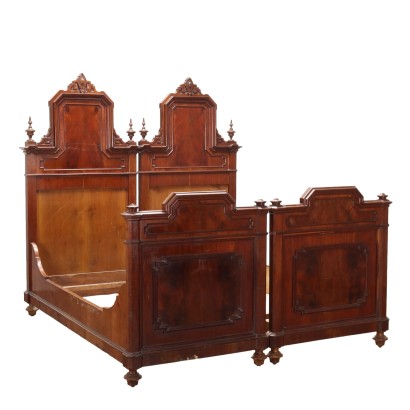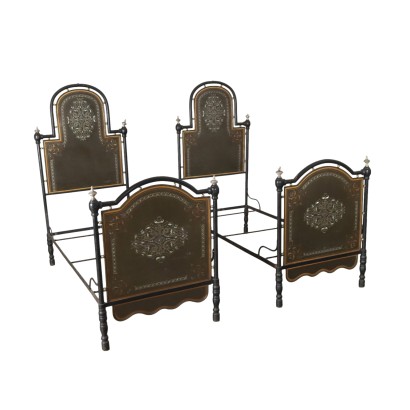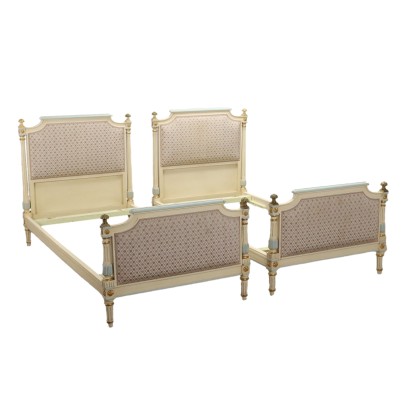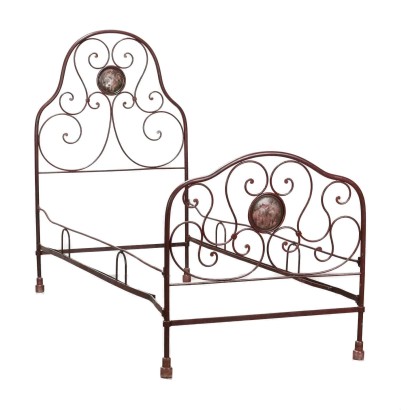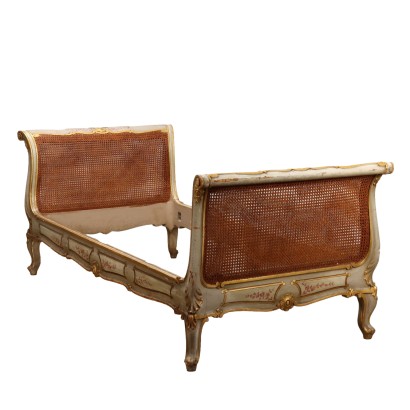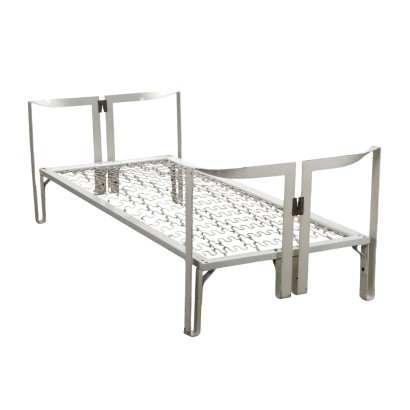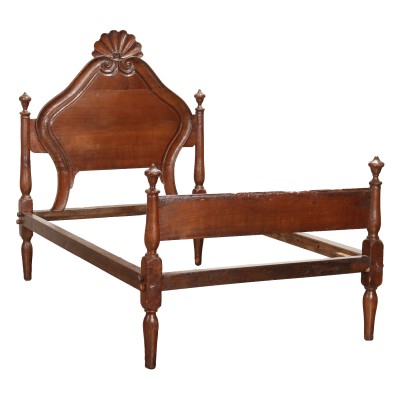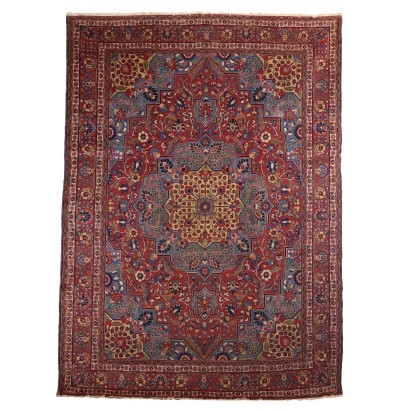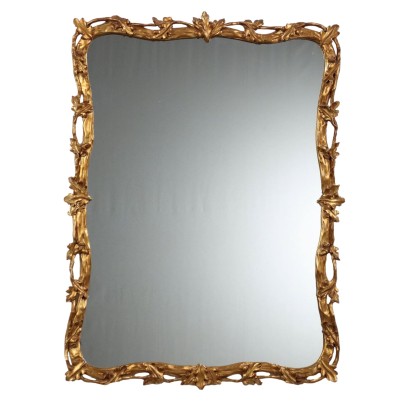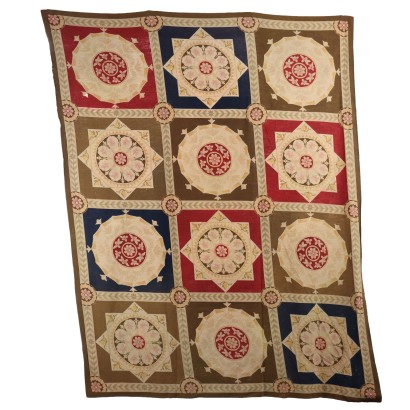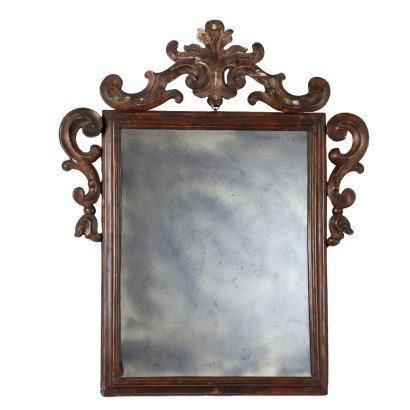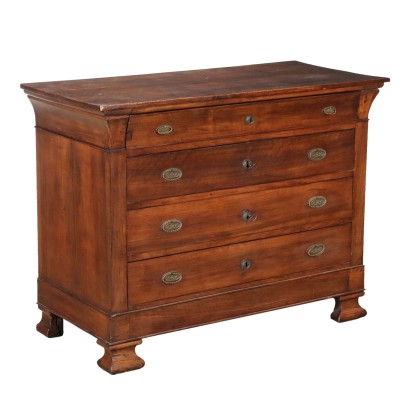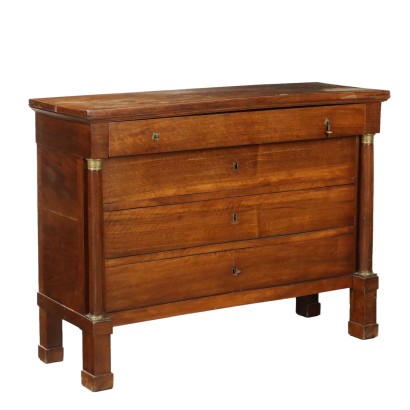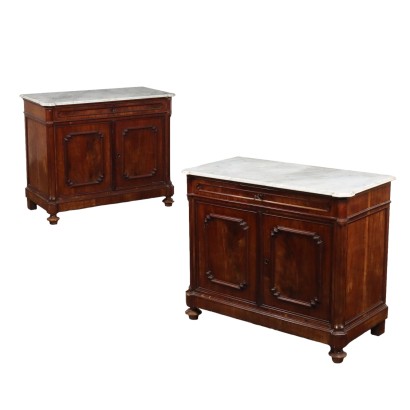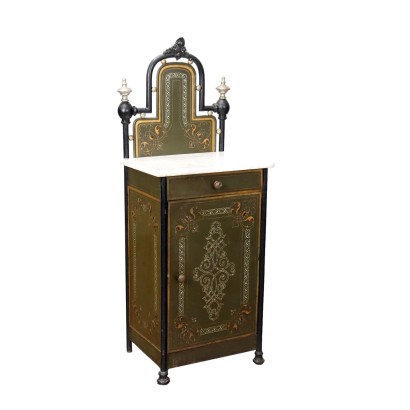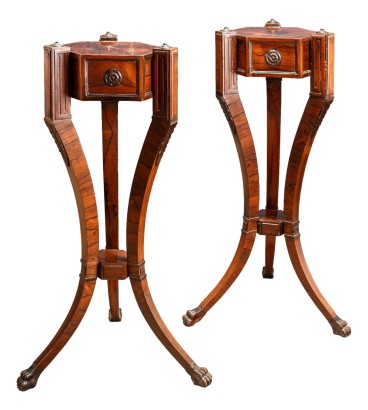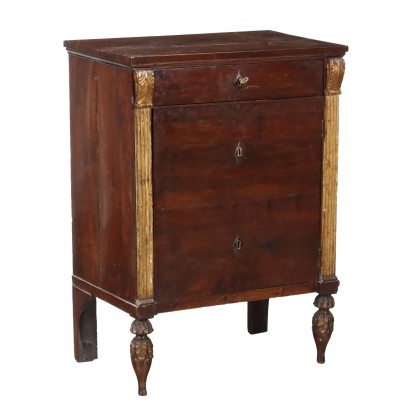Antique Single Beds Umbertino Mahogany Italy XIX Century - Italie, Late XIX Century
Features
Italie, Late XIX Century
Style: Umbertino (1870-1900)
Age: 19th Century / 1801 - 1900
Origin: Italy
Main essence: Mahogany
Description
Pair of Umbertini beds in mahogany, small modification in the moulding that allows it to form a double bed. Italy, late 19th century.
Product Condition:
Product that due to age and wear requires restoration and polishing. We try to present the real condition of the furniture as completely as possible with the photos. If some details are not clear from the photos, what is reported in the description is valid.
Dimensions (cm):
Height: 37
Width: 181,5
Depth: 196
Bed frame maximum sizes (cm):
Height: 195
Width: 199
Depth: 212
Additional Information
Style: Umbertino (1870-1900)
The name of this style is due to the ruler of the time Umberto I appointed King of the Kingdom of Italy on January 9, 1878 and assassinated on July 9, 1900.The Umbertino style is typically Italian and belongs to that Eclectic period that characterized the second half of the 19th century, which lasted just under twenty years. The Umbertino style spread around 1880 and ended around 1895 when a new style called Liberty and universally known as Art-Nouveau took over, followed by Art-Decò.
In this style, predominantly eclectic and monumental, Gothic and Baroque elements originally belonging to the Renaissance but also adorned with large masks, frames and decorations were re-proposed in furniture, from the bedside table to the large wardrobe or sideboard.
Find out more about the Umbertino style with our insights:
An Umbertine secretaire dedicated to Dante Alighieri
A comparison between a Louis Philippe console and an Umbertina
INSERT ADDITIONAL LINKS:
The Austrian taste of Baroque
A guide to Art Nouveau
Discovering Art Deco
Age: 19th Century / 1801 - 1900
19th Century / 1801 - 1900Main essence: Mahogany
It is one of the most precious and sought-after woods in cabinet making. It was discovered in Central America around 1600 and began to be imported to England in the 1700s. Much appreciated for its hardness and indestructibility, it became widespread following the blocking of walnut exports from France in 1720 and the consequent elimination of English import duties on mahogany from the colonies in America and India. The most valuable version comes from Cuba, but it became very expensive. At the end of the 18th century it began to be used also in France in Louis XVI, Directory and Empire furniture, its diffusion declined starting from when Napoleon, in 1810, forbade its import. It was generally used in the manufacture of elegant furniture, due to its characteristics and beautiful grain.Other customers have searched:
Approfondimenti
Scopri di più sui letti antichi con gli articoli del nostro blog:Un letto impero ci rivela le radici della nostra cultura
Un insolito Thonet
Sull'antiquariato in generale dai un'occhiata anche a:
Classic Monday: da un pezzo dei nostri magazzini alla storia dell'antiquariato
L'antiquariato dalla A alla Z: il Dizionario dell'Antiquariato
Il dizionario dell'antiquariato - Lastronatura
Il dizionario dell'antiquariato - Mascherone
Il dizionario dell'antiquariato - Natura morta
Il dizionario dell'antiquariato - Opificio
Il dizionario dell'antiquariato - Pastiglia
Il dizionario dell'antiquariato - Savonarola
Il dizionario dell'antiquariato - Rosone
Intaglio barocco con motivo a ricciolo
Product availability
The product can be seen at Cambiago
Immediate availability
Ready for delivery within 2 working days from ordering the product.

